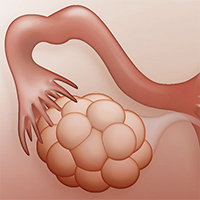Cutaneous manifestation of polycystic ovary syndrome
 Smart Citations
Smart CitationsSee how this article has been cited at scite.ai
scite shows how a scientific paper has been cited by providing the context of the citation, a classification describing whether it supports, mentions, or contrasts the cited claim, and a label indicating in which section the citation was made.
The aim of this cross-sectional study, that included 146 polycystic ovary syndrome (PCOS) patients, was to evaluate the prevalence, severity and pattern of cutaneous manifestation in Jordanian women with PCOS, as well as their correlation with hormonal abnormalities. A thorough complete cutaneous examination, hormonal assays (Luteinizing hormone [LH], follicle stimulating hormone [FSH], prolactin, total testosterone, free testosterone, dehydroepiandrosterone sulfate) and pelvic ultrasonography were done. The most common cutaneous features of PCOS were acne vulgaris (75.3%) followed by hirsutism (59.6%) then seborrhea (43.2%) and androgenetic alopecia (42.5%). Patients who had acne vulgaris presented at a younger age than patients who did not. Patients who had androgenetic alopecia and stria were older than patients with no such features. Moreover, all cutaneous manifestations of PCOS, except for acne, were associated with higher body mass index (BMI). Elevated LH:FSH ratio of more than 2:1 was the most common hormonal abnormality, followed by increased LH and total testosterone. Acne, hirsutism, androgenetic alopecia, seborrhea, acanthosis nigricans and skin tags are common cutaneous manifestations among Jordanian patients with PCOS. The existence of one or more of these features, especially in overweight and obese patients, should alert the physician towards the possibility of having PCOS.





 https://doi.org/10.4081/dr.2021.8799
https://doi.org/10.4081/dr.2021.8799





